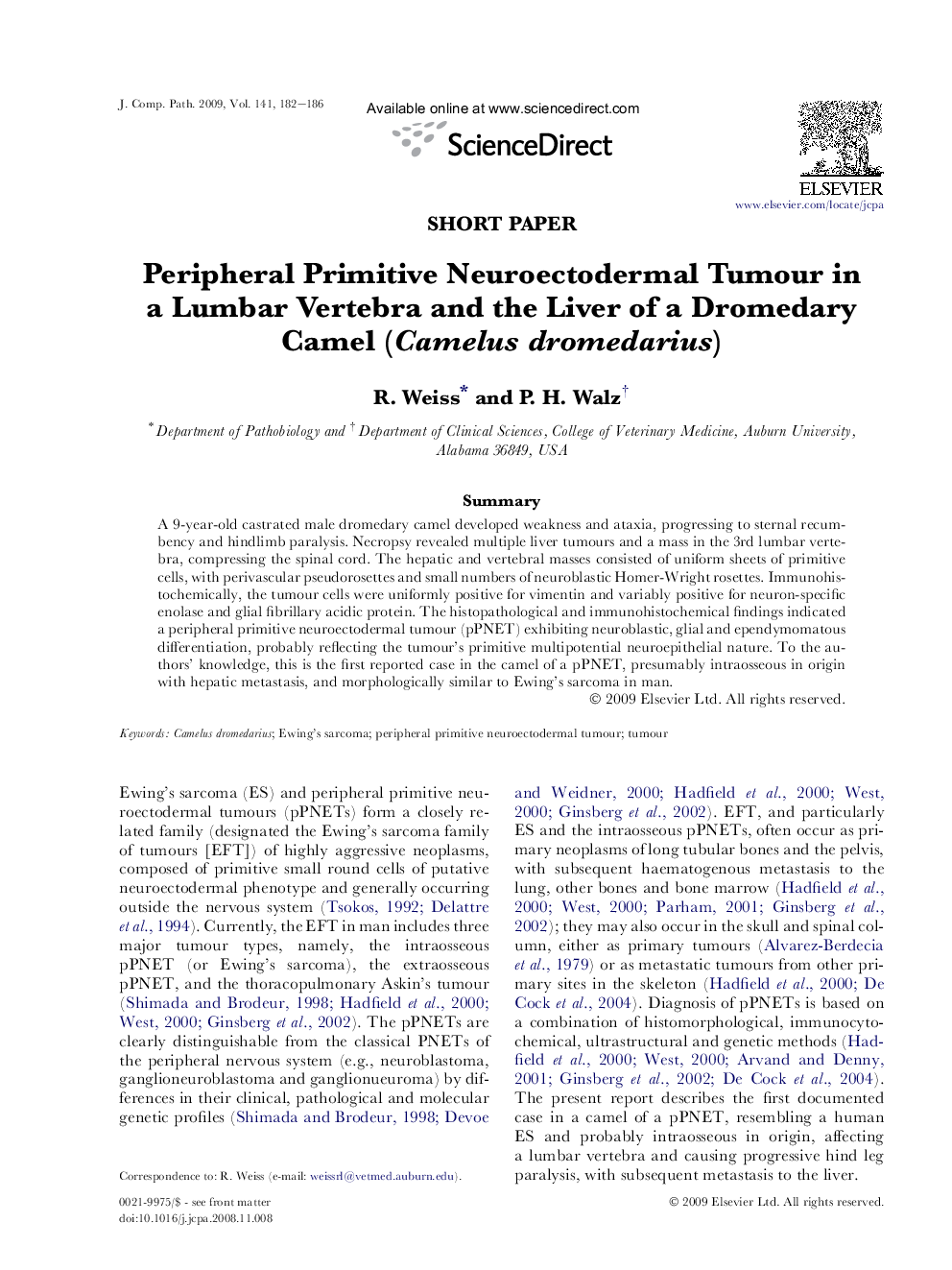| کد مقاله | کد نشریه | سال انتشار | مقاله انگلیسی | نسخه تمام متن |
|---|---|---|---|---|
| 2438156 | 1553772 | 2009 | 5 صفحه PDF | دانلود رایگان |

SummaryA 9-year-old castrated male dromedary camel developed weakness and ataxia, progressing to sternal recumbency and hindlimb paralysis. Necropsy revealed multiple liver tumours and a mass in the 3rd lumbar vertebra, compressing the spinal cord. The hepatic and vertebral masses consisted of uniform sheets of primitive cells, with perivascular pseudorosettes and small numbers of neuroblastic Homer-Wright rosettes. Immunohistochemically, the tumour cells were uniformly positive for vimentin and variably positive for neuron-specific enolase and glial fibrillary acidic protein. The histopathological and immunohistochemical findings indicated a peripheral primitive neuroectodermal tumour (pPNET) exhibiting neuroblastic, glial and ependymomatous differentiation, probably reflecting the tumour's primitive multipotential neuroepithelial nature. To the authors' knowledge, this is the first reported case in the camel of a pPNET, presumably intraosseous in origin with hepatic metastasis, and morphologically similar to Ewing's sarcoma in man.
Journal: Journal of Comparative Pathology - Volume 141, Issues 2–3, August–October 2009, Pages 182–186